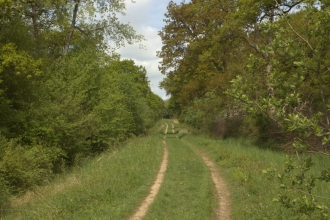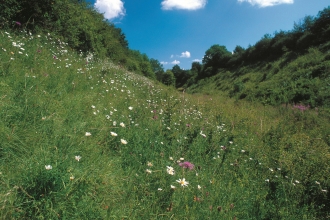The winter tools are out, and the work of clearing scrub and trees begins again. Bit by bit, with determination and the quiet joy that only a sharp saw can bring, woodland workers will start opening up the targeted areas, making space for new growth when spring returns.
They’re so efficient and quick in their work that I challenged the team to take on two tasks in our latest session. The first task was to cut a new scallop along the woodland edge, an area we last tackled seven years ago. By rotating the sections that are cut, a mosaic of vegetation at different stages of growth is created, a pattern that supports a rich, resilient biodiversity.






